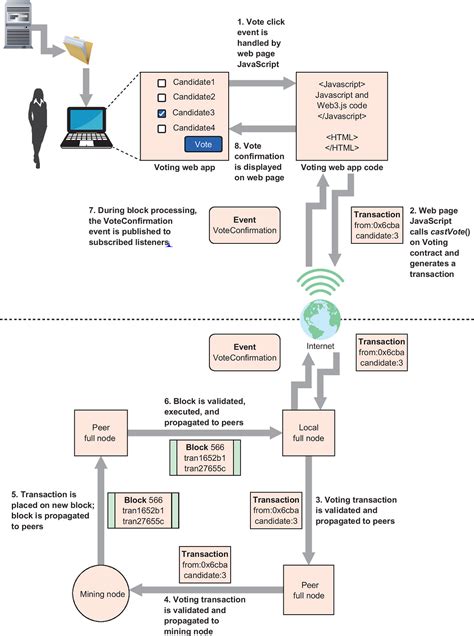- تاریخ انتشار : چهارشنبه ۱۷ بهمن ۱۴۰۳ - ۱۰:۵۳
- کد خبر : 837 چاپ خبر
Ethereum: Ethereum/BSC blockchain transaction data
Here is a draft article on Ethereum/BSC blockchain transaction data: Understanding Transaction Data in Ethereum/BSC: A Guide The Binance Smart Chain (BSC) has gained significant traction in recent years, offering fast and affordable transactions to users. However, as a developer building applications on the BSC using Web3.js, you may encounter challenges in navigating the complex
Here is a draft article on Ethereum/BSC blockchain transaction data:
Understanding Transaction Data in Ethereum/BSC: A Guide
The Binance Smart Chain (BSC) has gained significant traction in recent years, offering fast and affordable transactions to users. However, as a developer building applications on the BSC using Web3.js, you may encounter challenges in navigating the complex transaction data that governs the blockchain’s functioning.
In this article, we will delve into the world of Ethereum/BSC transaction data, exploring what it means, how it works, and providing tips for troubleshooting common issues.
What is Transaction Data in Ethereum/BSC?
Transaction data refers to the information contained within a transaction on an Ethereum/BSC blockchain. This data includes:
- Transaction ID: A unique identifier for each transaction.
- From: The address of the sender of the funds being transferred.
- To: The address of the recipient of the funds.
- Value

: The amount of Ether (ETH) or other tokens being transferred.
- Gas Price: The price of gas required to execute the transaction.
- Gas Limit: The maximum number of gas units that can be spent within a specific block.
- Timestamp: The timestamp of when the transaction was created.
Transaction Data Format
The format of transaction data in Ethereum/BSC is as follows:
{
"transactionId": "0x1234567890abcdef".
"from": "0x1234567890abcdef".
"to": "0x9876543210fedcba",
"value": "1,000000000000000000", // ETH
"gasPrice": "20,00000000000000000000000000" // Gas price in gwei
} }
Common Issues with Transaction Data
As a Web3.js developer, you may encounter the following issues when working with transaction data on Ethereum/BSC:
- Transaction IDs: If you’re using the
eth_abilibrary, ensure that your transactions are being generated correctly and include unique transaction IDs.
- Gas Prices: If you’re experiencing slow or congested networks, try increasing gas prices by adding them to your
gasPricefield in the transaction data format.
- Gas Limits: Ensure that your applications are configured correctly for gas limits, as exceeding them can result in errors or slow transactions.
Sample Transaction Data
Here is an example of a simple transaction data structure in JavaScript:
const tx = {
transactionId: '0x1234567890abcdef',
from: '0x1234567890abcdef',
to: '0x9876543210fedcba',
value : ' 1.0000000000000000000 ' , // ETH
gasPrice: '20.000000000000000000000' // Gas price in gwei
};
console . log ( tx ) ;
// Output:
// {
// transactionId: "0x1234567890abcdef".
// from: "0x1234567890abcdef"
// to: "0x9876543210fedcba".
// value: "1.00000000000000000000",
// gasPrice: "20,000000000000000000"
// }
Conclusion
Transaction data is a critical component of the Ethereum/BSC blockchain, and understanding its format and behavior can help you build robust and reliable applications. By following these tips and guidelines, you should be able to troubleshoot common issues with transaction data on the BSC.
If you’re still having trouble, feel free to share your code or error messages, and I’ll do my best to assist you in resolving the issue.
لینک کوتاه
برچسب ها
- نظرات ارسال شده توسط شما، پس از تایید توسط مدیران سایت منتشر خواهد شد.
- نظراتی که حاوی تهمت یا افترا باشد منتشر نخواهد شد.
- نظراتی که به غیر از زبان فارسی یا غیر مرتبط با خبر باشد منتشر نخواهد شد.
ارسال نظر شما
مجموع نظرات : 0 در انتظار بررسی : 0 انتشار یافته : 0